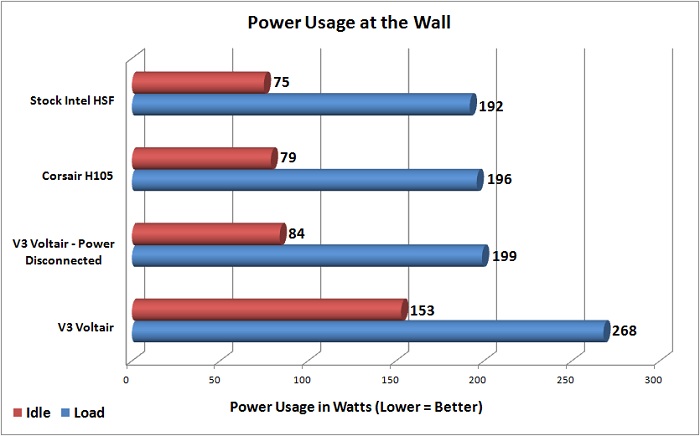V3 Components Voltair TEC CPU Cooler Review
Power Consumption
This is a new section that Im adding into the cooler reviews just to get a little more insight on what youre getting yourself into for power consumption. In the way past (2007 to be exact), we looked at a TEC air cooler and discovered that it consumed a fair amount of power, so it is only fair to check out how much juice the Voltair consumes, hoping that the technology has changed in this category. Well take a look at both idle and load numbers to see if there is any variation in the numbers when the TEC plate is both connected and disconnected.
The stock cooler and liquid cooler will not have any power elements disconnected; rather theyre introduced to help you understand the power consumption differences between the coolers when theyre fully functional.
To do our measuring for power consumption, well be using a Kill-A-Watt meter hooked up to the computer only, well let it sit idle for 15 minutes after boot to allow it to settle down, and take a measurement then. Well use the average whole number that it is displaying. Well then load up Prime95 to put a full load on the CPU, to get each cooler to work as hard as they can, grabbing the power consumption numbers in the same way. All tests are done at the stock frequency of 3.9GHz turbo on the i7-4770k.

Overall Results: Looking at the V3 Voltair itself, it consumed a whopping 69 watts extra with the TEC plate power connected! Thats quite a considerable amount. It was good to see that it didnt require any extra power when the CPU was under the stress of Prime95. The 72 watt difference on the load power consumption between the Voltair and the Corsair H105 is another significant power difference for a cooler that outshined the Voltair.
